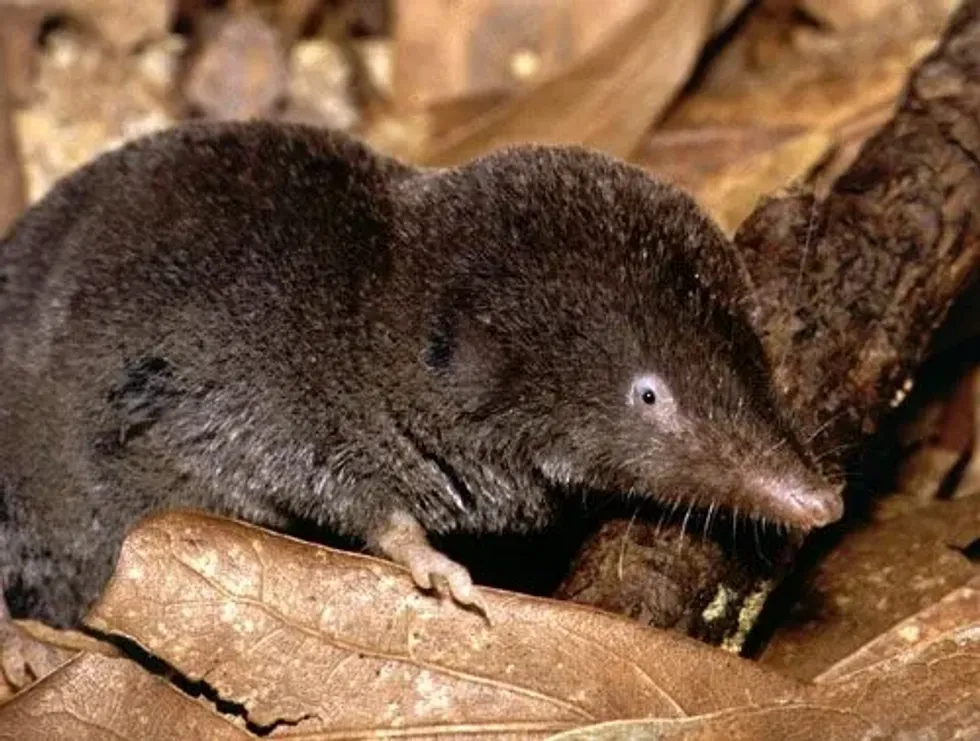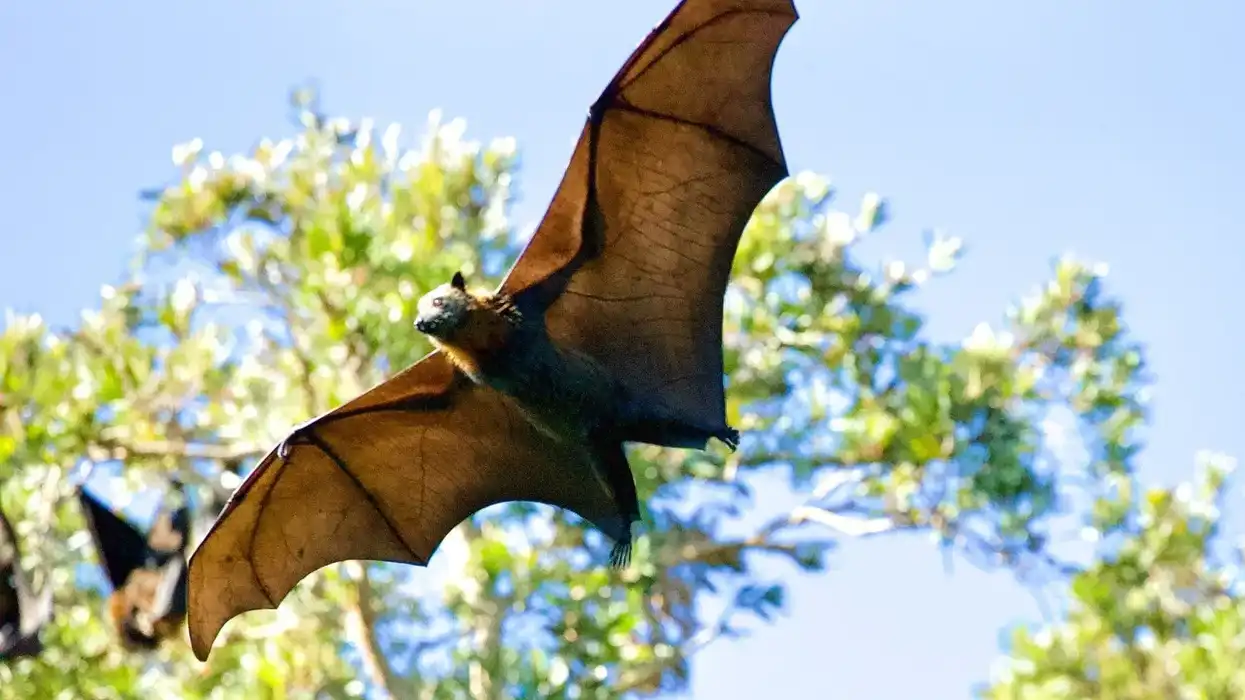Southern Short-tailed Shrews are also known as Blarina carolinensis scientifically. These shrews are found in the southeastern United States in moist and well-drained habitats with woody vegetation.
These shrews have a soft and dense pale and gray fur. They have small ears and small eyes with claws and sharp teeth. The tail is short and hairy.
The diet of these mammals includes vegetables but mostly prey on earthworms, snails, and insects. They also become prey to snakes, wolves, and weasels.
The breeding of these mammals takes place twice a year and the gestation period lasts for about 21-30 days. These shrews are known to live for a year or two in the wild but can live for up to 33 months in captivity. A female reaches sexual maturity earlier than a male.
The conservation status of these species is Least Concern. These are quite interesting species to know about and if you are interested read about agouti and water vole too.
Southern Short Tailed Shrew Interesting Facts
What type of animal is a Southern Short Tailed Shrew?
Southern Short-tailed Shrews are shrews.
What class of animal does a Southern Short Tailed Shrew belong to?
Southern Short-tailed Shrew belongs to the class of mammals.
How many Southern Short Tailed Shrew are there in the world?
There has been no specific number of Southern Short-Tailed Shrews in the world recorded yet.
Where does a Southern Short Tailed Shrew live?
Southern Short-tailed Shrews are found in the southeastern United States from parts of Virginia to Texas and in the Mississippi valley and southern Illinois.
What is a Southern Short Tailed Shrew's habitat?
The Southern Short-tailed Shrew habitat includes moist, well-drained habitats with woody vegetation. The moist and well-drained soil helps the Southern Short-tailed shrew burrows as it becomes easier for them to dig and make their nests.
They live in areas with dry leaves, grasses, and other shredded materials in which they forage and also use these materials to make their nests.
Who do Southern Short Tailed Shrews live with?
Southern Short-tailed Shrews are known to be solitary species and tend to spend most of the time in burrows.
How long does a Southern Short Tailed Shrew live?
In the wild, Southern Short-tailed Shrews are known to live not more than a year but it has been recorded that they live for around 33 months in captivity.
How do they reproduce?
While not a lot of information is available about the mating of these species. These species breed twice a year. One breeding period is between March and June, with the peak period being April and the other breeding period is between September and November, with the peak being October. The gestation period lasts between 21-30 days.
The average litter size is two to six individuals. The young weigh around one gram. Females reach sexual maturity before males.
What is their conservation status?
The conservation status of this species is Least Concern.
Southern Short Tailed Shrew Fun Facts
What do Southern Short Tailed Shrews look like?
Southern Short-tailed Shrews have comparatively heavier bodies. It has short limbs, thick necks, and a long and pointed snout and its small ears are covered with soft, dense fur. It also has small eyes.
It has a short and a hairy tail. The feet have five toes ending in curved and sharp claws adapted for digging. The fur is gray in color and gets paler on the underparts.
How do they communicate?
Not much is known about the communication of Southern Short-tailed shrews but it is believed that these animals use tactile and chemical ways or methods to communicate. In general, shrews are quite vocal animals and use echoes and reverberations of their calls to find routes through their habitats and to probe.
How big is a Southern Short Tailed Shrew?
Southern Short-tailed shrews are around 2.8-3.9 in (71-99 mm) long and weigh around 0.03 lb (0.014 kg).
How fast can a Southern Short Tailed Shrew run?
Southern Short-tailed shrews are known to walk fast due to their strong forefeet but the exact speed is unknown.
How much does a Southern Short Tailed Shrew weigh?
Southern Short-tailed Shrews weigh up to 0.03 lb (0.014 kg).
What are their male and female names of the species?
There are no specific names for the male and female of the species.
What would you call a baby Southern Short Tailed Shrew?
There is no particular name for babies of Southern Short-tailed shrews.
What do they eat?
These animals are known to be carnivores but sometimes, these animals also eat vegetables found in dry grasses and leaf litter. The Southern Short-tailed shrew diet consists of earthworms, snails, insects, centipedes, and berries.
Are they dangerous?
While the saliva of the Southern Short-tailed shrews contains mild venom which could paralyze the prey, Southern Short-tailed shrew bite is not dangerous to humans.
Would they make a good pet?
While the Southern Short-tailed shrews can be tamed and are small in size, Southern Short-tailed shrew as a pet might not be a great choice as they have a musky odor, sharp teeth, and a short lifespan.
They can sometimes be harmful to other pets or animals as the saliva of these species contains mild venom which could paralyze the animals.
Did you know...
These animals are the smallest in their genus.
The males and females remain close together or with each other during the pre-breeding season.
These shrews are considered to be the most numerous mammalian species and influence the invertebrates communities in their own way with their own predation habits.
The predators include milk snakes, black snakes, hawks, owls, foxes, weasels, and skunks.
The Southern Short-tailed shrew nest is built beneath the ground or can be deep as they tend to burrow with great speed. In soft soil, these shrews can burrow up to a rate of 30 cm per minute which is quite interesting as they have a small size.
Shrews do not harm plants and they do not do burrowing in the garden beds so they are not actually bad for your yards.
Southern Short-tailed shrew venom is also popular as they are the only animals who have venom in the Blarina genus. Southern Short-tailed shrew teeth are very sharp and thus, helps it to prey on various small crustaceans. It is believed that the shrews can sometimes eat mice too.
Are Southern Short Tailed Shrews poisonous?
The saliva of these species contains mild venom and it could harm or paralyze its prey but they are known to be of no harm to humans.
What are Southern Short Tailed Shrew babies like?
The young ones or the newborns are pink in color and are born blind and are completely helpless at birth and thus, they are dependent on their parents. They are about only a gram when they are born.
The young Southern Short-tailed shrews' eyes are opened and are weaned when they are around 18-22 days old and around this same point, these young shrews start exploring and venturing out of their nests.
Here at Kidadl, we have carefully created lots of interesting family-friendly animal facts for everyone to discover! Learn more about some other mammals including dormouse, or jerboa.
You can even occupy yourself at home by drawing one on our Southern short tailed shrew coloring pages.










